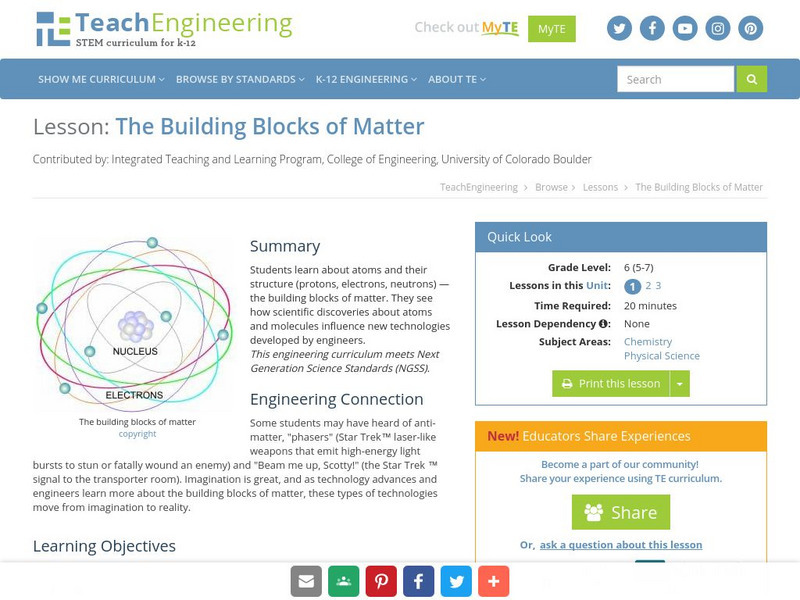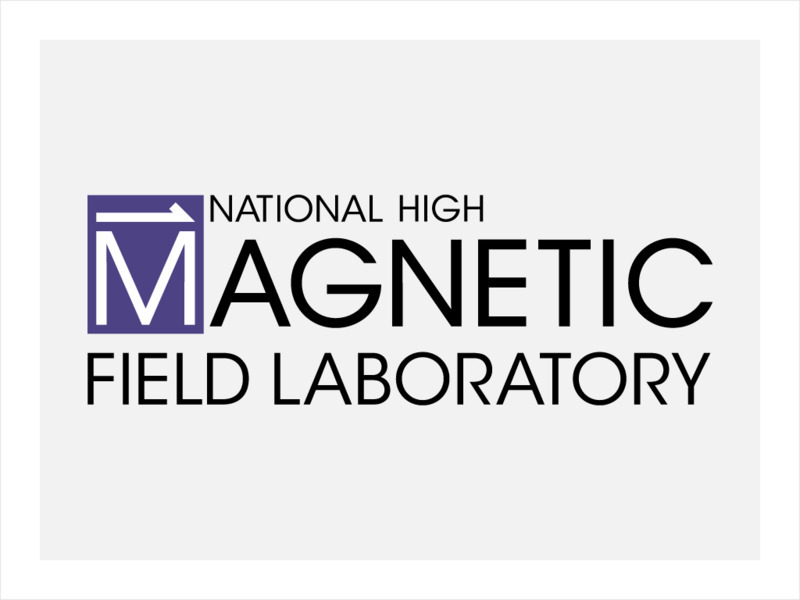Chem4kids
Chem4 Kids: Atoms: Electrons
Learn about an electron's negative charge, location, and role in bonding. Website also investigates electrons uses in electricity.
Concord Consortium
What Are the Factors That Affect How Strongly Objects Interact With Each Other?
Exploration of models of electric field to explain how charged objects interact with other objects via simulations, practice and activities. Sponsored by Concord Consortium and the CREATE for STEM Institute at Michigan State University.
Concord Consortium
Concord Consortium: What Are Factors That Affect How Strongly Objects Interact With Each Other?
Explore and use models of electric fields to explain how charged objects interact with other objects.
National High Magnetic Field Laboratory
Magnet Academy: Oil Drop
It may look like a simple black blob, but an oil drop is in fact a phenomenally complex mix of immense molecules called hydrocarbons. Using a type of mass spectrometry called FT-ICR, scientists can analyze oil and other macromolecules...
Georgia State University
Georgia State University: Hyper Physics: Equipotential Lines
At this site from the Georgia State University, the equipotential lines around several different configuration of charges are shown and described. Excellent graphics and clear discussion.
National High Magnetic Field Laboratory
Magnet Academy: Bubble Chamber 1952
To understand a bubble chamber, picture the long, white streak an airplane leaves in its wake. That's water vapor produced by condensation from the plane's hot exhaust. Until the water particles evaporate, you can follow the streak to...
PBS
Pbs Teachers: Scientific American: Creatures of the Deep: Shark Trackers
Track an unseen target with an audio meter, and make accurate estimations of distance and depth by analyzing the signal strength and frequency. Construct an electroscope to detect electric charges.
Encyclopedia Britannica
Encyclopedia Britannica: Hydrogen Ion
This brief entry describes the hydrogen ion, strictly, as the nucleus of a hydrogen atom separated from its accompanying electron. The hydrogen nucleus is made up of a particle carrying a unit positive electric charge, called a proton.
Educaplus (Jesús Peñas Cano)
Educaplus: Enlace Ionico [In Spanish]
Expand your knowledge of Chemistry. Observe how ionic compounds are networks of electrically charged atoms.
Other
K 3 Learning Pages: Web Resources Thunderstorms
Check out this comprehensive list of web resources on thunderstorms and safety. Students and teachers will benefit from the links found on this site.
TeachEngineering
Teach Engineering: The Path of Electrons
Students engage in an interactive "hot potato" demonstration to gain an appreciation for the flow of electrons through a circuit. Students role play the different parts of a simple circuit and send small items representing electrons...
Physics Aviary
Physics Aviary: Coulomb's Law Lab
This mini-lab allows students to discover the relationships that create Coulomb's Law.
Famous Scientists
Famous Scientists: Charles Augustin De Coulomb
A short biography about Charles Coulomb, known for developing Coulomb's law, the definition of the electrostatic force of attraction and repulsion.
National High Magnetic Field Laboratory
Magnet Academy: Robert Millikan
Robert Andrews Millikan was a prominent American physicist who made lasting contributions to both pure science and science education. He is particularly well known for his highly accurate determination of the charge of an electron via...
Science and Mathematics Initiative for Learning Enhancement (SMILE)
Smile: Electrostatics
A teacher lesson plan which includes activities pertaining to common methods of charging objects - induction, conduction, and friction.
TeachEngineering
Teach Engineering: The Fundamental Building Blocks of Matter
This lesson plan explores the fundamentals of atoms and their structure. The building blocks of matter (protons, electrons, neutrons) are covered in detail. Students think about how atoms and molecules can influence new technologies...
Other
Perspectives on Plasmas: The Fourth State of Matter
An educational website dealing with all aspects of the fourth state of matter, Plasma. The site deals with basics, applications and resources. The site also includes a gallery of pictures of plasma.
Concord Consortium
The Concord Consortium: Molecular Workbench: Lorentz Force 3 D
Adjust the magnetic field intensity and the particle speed in this simulation to observe the affect the movement of the particle.
National High Magnetic Field Laboratory
Magnet Academy: Torsion Balance
Experiment with the torsion balance and see what happens first by giving the rod a charge, and then by moving the charged rod closer to the outer metal sphere of the instrument. Observe what happens to the needle as the charge increases.
National High Magnetic Field Laboratory
Magnet Academy: Charles Augustin De Coulomb
Charles-Augustin de Coulomb invented a device, dubbed the torsion balance, that allowed him to measure very small charges and experimentally estimate the force of attraction or repulsion between two charged bodies. The data he obtained...
South Carolina Educational Television
Etv: Nasa Online: Lightning and Static
The concepts of lightning and static charges are made easy to understand by watching this interactive graphic website. Basic terms are explained and illustrated as well.
National High Magnetic Field Laboratory
Magnet Academy: Electrophorus 1764
A very primitive capacitor, this early device allowed scientists to give discs of metal a specific charge.
National High Magnetic Field Laboratory
Magnet Academy: Julian Schwinger
Theoretical physicist Julian Schwinger used the mathematical process of renormalization to rid the quantum field theory developed by Paul Dirac of serious incongruities with experimental observations that had nearly prompted the...
Curated OER
Georgia State University: Equipotential Lines
At this site from the Georgia State University, the equipotential lines around several different configuration of charges are shown and described. Excellent graphics and clear discussion.
Other popular searches
- Electric Charge Behavior
- Electric Charge and Force
- Physics Electric Charges
- Electric Charges and Current
- Flow Electric Charges
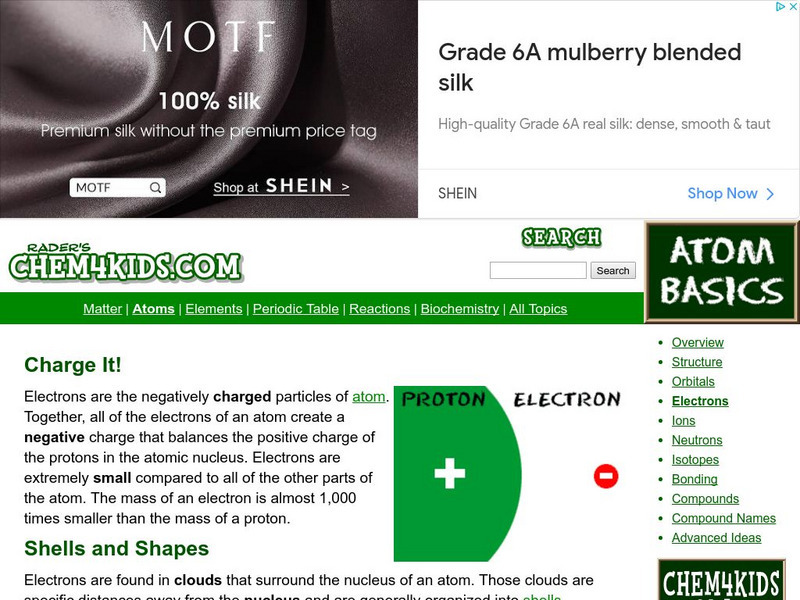

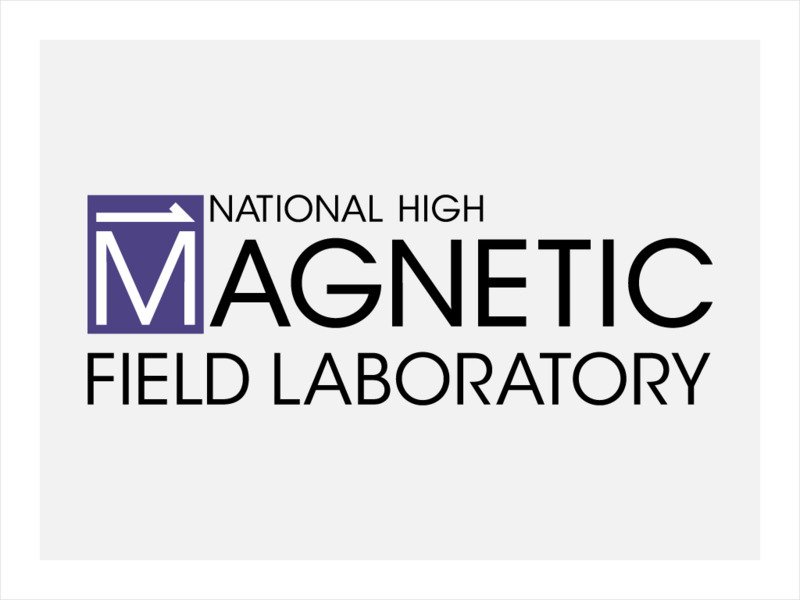
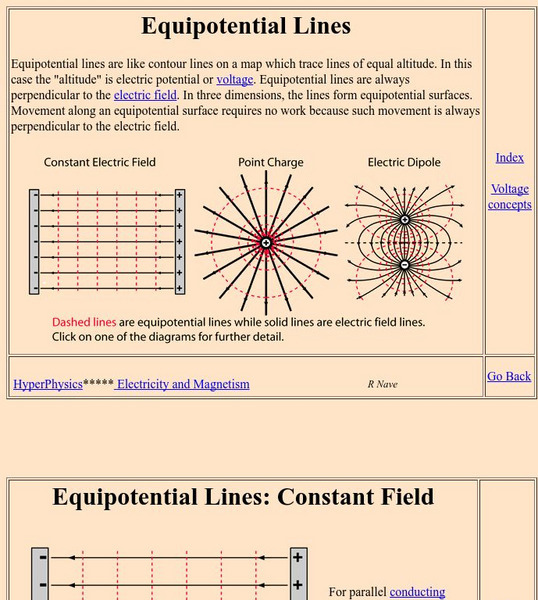
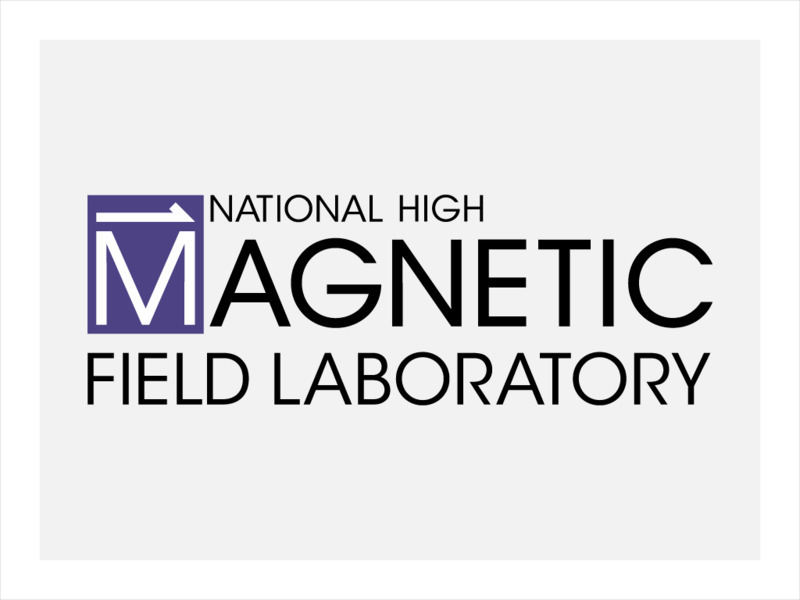


![Educaplus: Enlace Ionico [In Spanish] Activity Educaplus: Enlace Ionico [In Spanish] Activity](https://content.lessonplanet.com/knovation/original/371949-76073a684ee4c0d8b8f98ca59436f253.jpg?1661809839)




